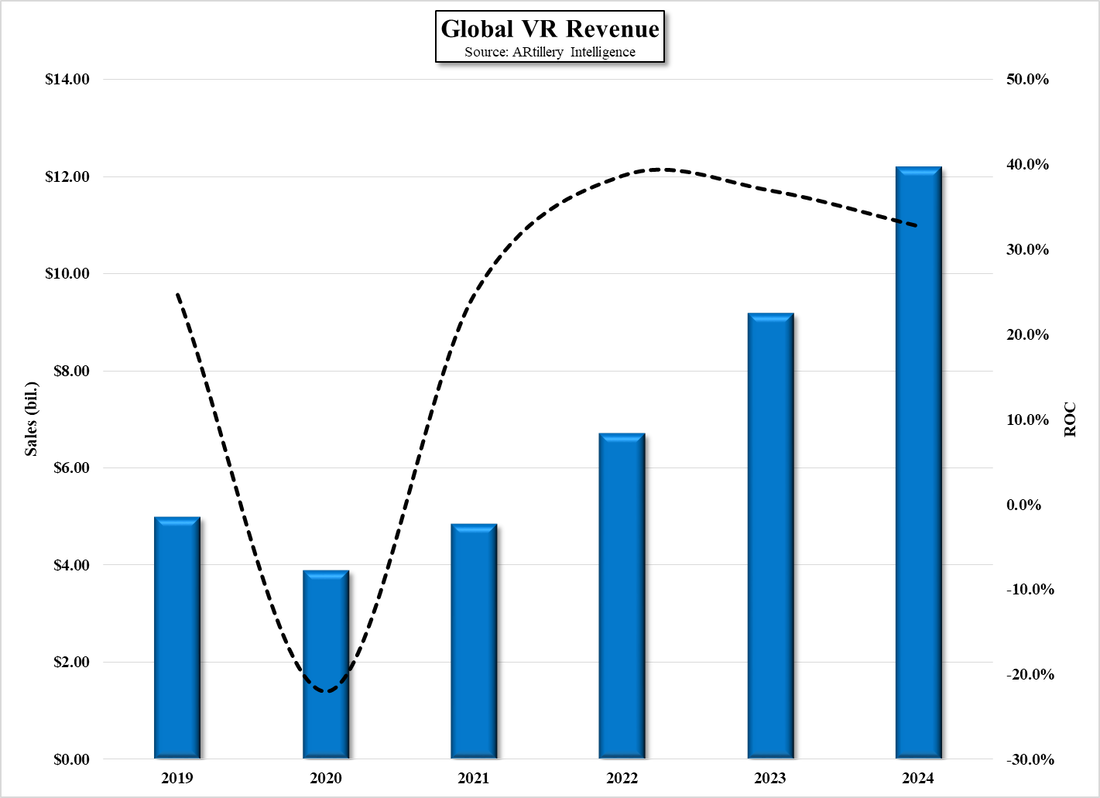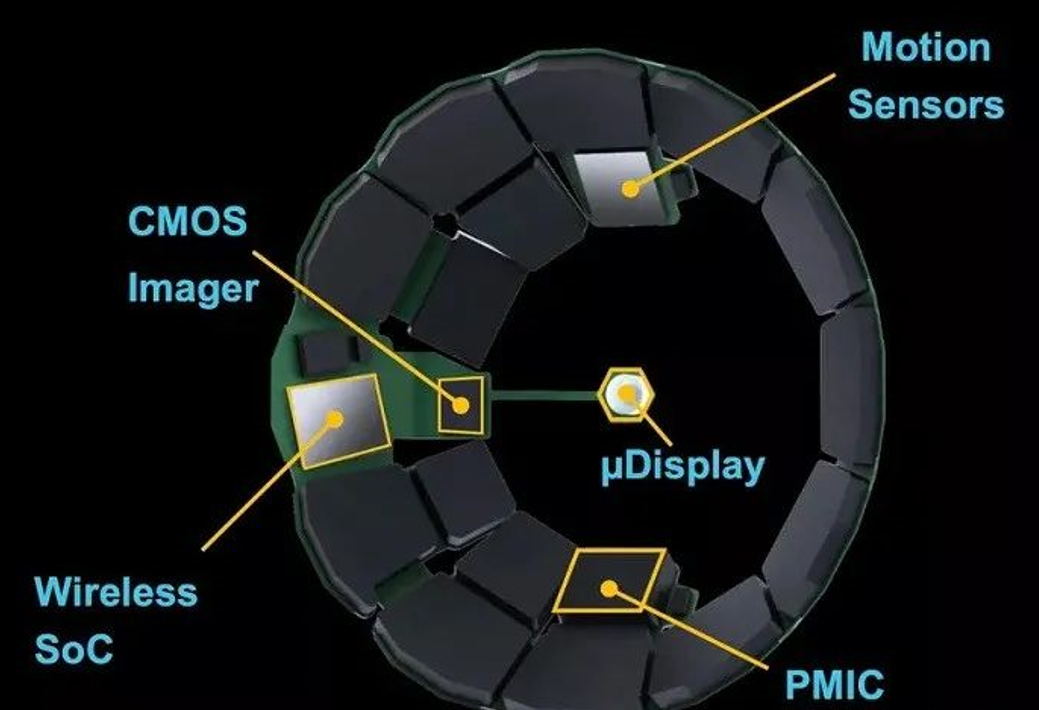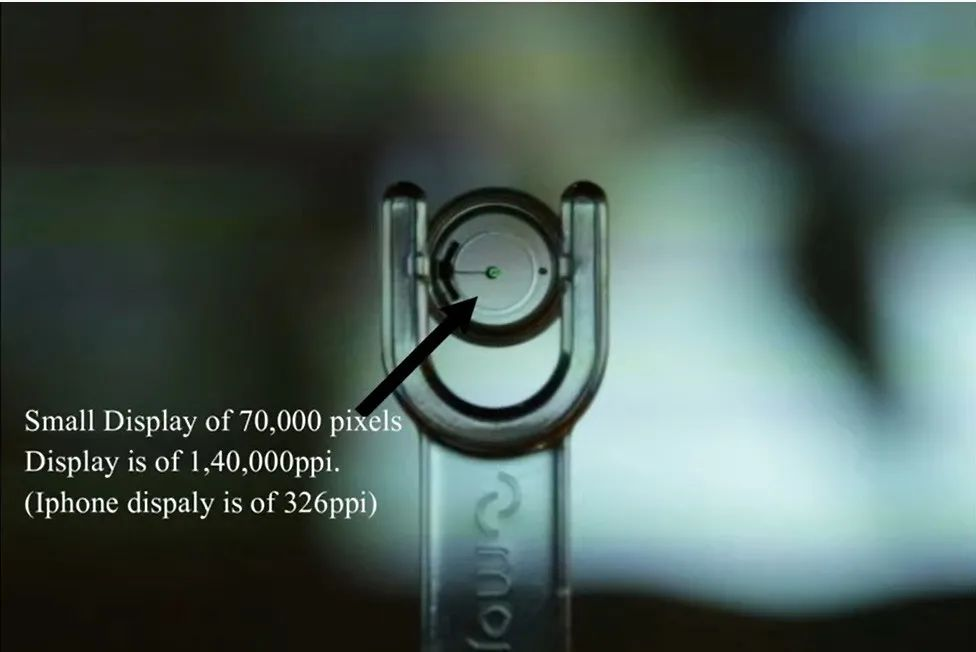The idea of always being in touch with social media, the internet, and just about any sort of mobile communication, while wandering around a city such as New York, does have appeal to many, despite the dangers it might create, but implementing such a system still requires considerable expertise in a number of CE specialties and while continuing to evolve, is not easily implemented in a ‘cool’ way. That was until a California based start-up called Mojo Vision (pvt) began developing an AR device that is not only unobtrusive but would be invisible to the casual observer. The company is developing an AR ‘contact lens’ that would allow the user to see the same superimposed data that a pair of AR glasses might provide, just by wearing what looks like a contact lens with a bit of a ‘Terminator’ cast.
The device is powered by a Micro-LED display that is ‘the size of a grain of sand’ and sensors that are internally powered, along with a lens that corrects your vision. The ‘correcting’ part was what gave the company’s founders the idea that a bionic eye might be able to be used to correct severe vision issues and finding an engineer who had considerable experience in AI, computer vision systems, 3D graphics, and VR, who had his own vision issues, began the push toward the development of what is now getting close to reality. The display, which has ~70,000 pixels, and is less than half a millimeter across, projects the overlay image directly to the back of the eye (fovea), which is the area of the eye that detects fine detail and is essentially a dense collection of photoreceptors taking up less than 5% of the retina. Being .48mm in size and having 70,000 pixels, gives the display a ppi (pixels/inch) of 14,000, which is ~300 times that of current smartphones. The display projects a mono-color image, essentially data, which precludes the necessity of a more complex full color display, and the internal battery, which is rechargeable, can last for an entire day, with future versions wirelessly powered by a device worn on a necklace, although that is still quite speculative. The device does need a smartphone or similar device to connect to the outside world, with future versions containing communications hardware, but again, that is in the future.
The company, which has raised $159m in seven rounds, including Dolby (DLB), LG (066570.KS), Motorola (MSI) and a number of VCs, is focusing (sorry) on developing some very specific applications for the device, among which is an application for firefighters, which lays out build plans as the user moves, along with outlining objects that might be difficult to see under smoky conditions (imbedded camera), along with oxygen levels and messages, although the usage shown on the site is more pedestrian in nature. There are still a number of hurdles that need to be met before such a device can actually be used, some of which might keep the device out of the public eye (sorry) for some time, but with 150m contact lens wearers globally there is certainly a market for just the ability for such a device to improve eyesight, and with the promise of a connection to a world of data without the need for glasses, the incentive is certainly apparent. While an actual product is still in the future, it’s worth a look at the website to get an idea of what such a device would be capable of[1].
[1] SCMR LLC, has not connection with Mojo Vision, its employees or its partners, and has no investments in any companies, public or private. We present this information as a reference only and do not suggest that investors take the information as a recommendation to buy or sell companies mentioned.





 RSS Feed
RSS Feed